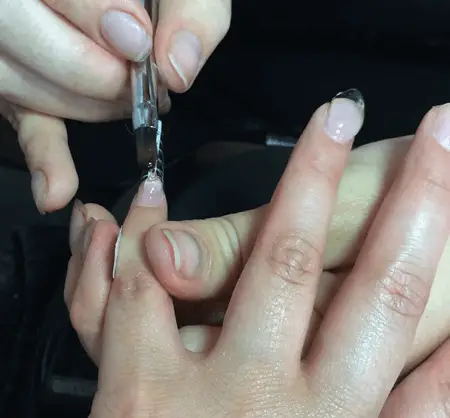Some women undergo certain enhancements as part of their beauty and personal care needs. In terms of nail care, they often have treatments ranging from simple manicures and pedicures to more elaborate nail accessories. When it comes to nail modification, the most commonly used are gel nails and acrylic nails. They are both false nail applications and are used by many women. But did you know that there are quite a few differences between gel and acrylic nails? Continue reading as we have laid out for you the items that set these two cosmetic nails apart.
Summary Table
| Gel Nails | Acrylic Nails |
| Softer, less durable | Harder |
| More flexible | Hard and robust |
| Odorless | Have strong chemical smell and fumes |
| Curing requires UV light | Curing occurs the moment the chemicals are combined |
| Have a more natural and glossy appearance | Look less natural than gel |
| Last up to 2 weeks | Last longer than gel nails |
| More expensive | Less expensive |
| Harder to apply, requiring the help of a nail expert | Easier to apply |
| Harder to fix or replace when damaged | Easier to fix or replace when needed |
| Non-porous, don’t soak off and cannot be removed easily with acetone | More porous, easier to soak off with acetone |
| Less prone to bacterial contamination | More prone to create a breeding ground for fungus and bacteria |
Descriptions

Gel nails are cosmetic nails that are made from polymer powder and monomer liquid. They also contain oligomers, identified as short chain monomers, which make the artificial nails flexible. Gel nails are odorless and look quite similar to natural nails. They are also noted to be safe and eco-friendly. After being applied by the nail expert, the fingernails go under ultraviolet light for two minutes to cure. Other types of gel nails are also available that do not require exposure to UV light. They only need to be sprayed or brushed with a gel activator to start the curing process.
Once done, gel nails appear nice and glossy and can last up to two weeks. An advantage of gel nails is that they are non-porous, thus are less prone to bacterial contamination. However, they are thin and prone to breakage. They are also quite pricey and expert assistance is needed when they get damaged as they are hard to fix and replace. When removing, gel nails often need to be filed off and require a lot of work.

Acrylic nails are artificial nail enhancements made from a mixture of polymer powder and liquid monomer. Curing happens instantaneously as the chemicals are combined. They are commonly used as cosmetic nails primarily because of their durability. When applied correctly and cared for properly, these nails can last a long time. However, acrylic nails do tend to have strong chemical smell and fumes which make them a little less desirable. It is not advisable for pregnant women to use acrylic nails. Nevertheless, they are still preferred by many since acrylic nails are not that expensive and are easier to apply and remove. It’s as simple as putting on a special glue and fixing the nails in place. To remove them, the nails can simply be soaked off with acetone.
Apart from aesthetic purposes, acrylic nails are also used to help protect the natural nails from further breakage or splits. However, they can also damage the nail bed. Acrylic nails are porous and the breakage can create a possible breeding ground for bacteria.
Gel Nails vs Acrylic Nails
What is the difference between gel nails and acrylic nails? Gel nails are softer and more flexible while acrylic nails are harder and more durable. In terms of smell, gel nails are more favorable as they are odorless compared to the strong chemical scent of acrylic nails. When it comes to curing, gel nails require UV light, whereas acrylic nails cure the moment the chemicals are mixed together. Gel nails have a natural, glossy appearance and can last up to two weeks. They are generally more expensive. Acrylic nails, on the other hand, may look less natural but they last longer than gel nails and are also less expensive.
Gel nails are harder to apply and also harder to fix when damaged. One would need the help of a nail expert in both the application and removal process. Conversely, acrylic nails are easier to apply and fix when needed and can be done at home. When it comes to personal hygiene, it would be better to go with gel nails as they are non-porous, making them less prone to bacterial contamination.
Video
Watch this video to see the differences between gel nails and acrylic nails.





